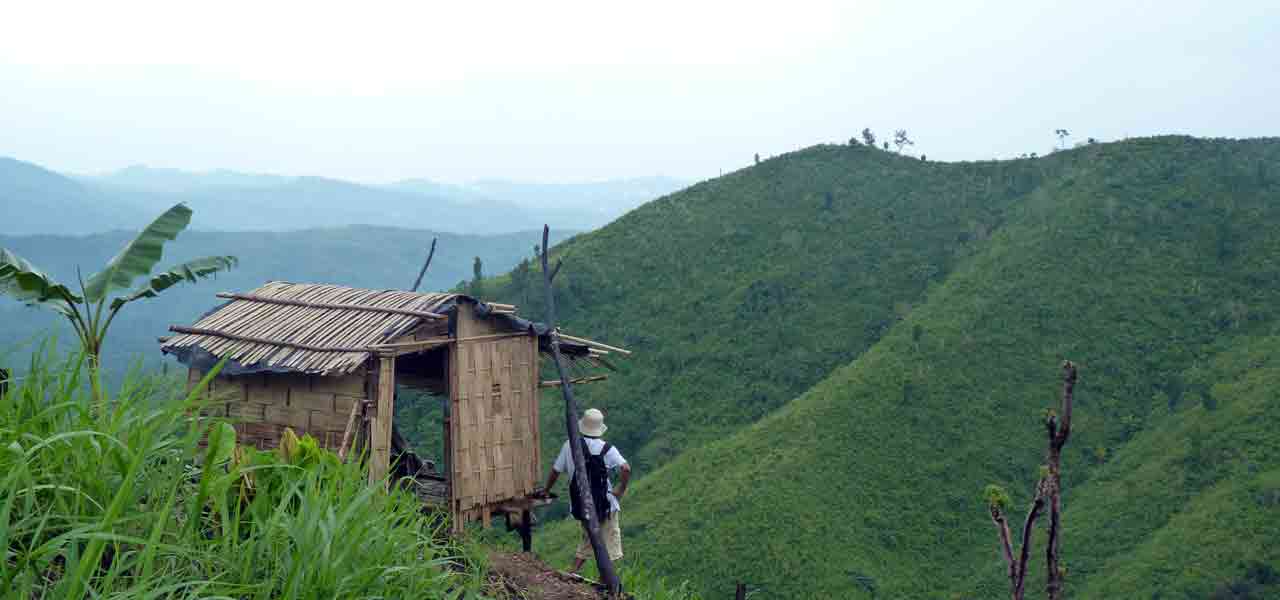Tipaimukh is located in the south western hilly region of Manipur bordering Mizoram and Assam. With total geographical area is 789, 48 km and population of 23,995 according to 2011 census. Majority of the community are Hmar and there are other ethnic communities such as Paite, Zou, Simte, Mizo and Kuki
The area and its people are severely marginalized in every aspects- socio-economic and political. The state has visibly withdrawn from these constituencies for over two decades. As a result, the indigenous Hmar peoples have a complex relationship with the state. This relationship defines many aspects of the indigenous peoples’ life, influencing their social, political and economic abilities.Over 90 percent of the indigenous peoples in these constituencies are totally dependent on their land and resources for the livelihood: they are farmers practicing traditional shifting cultivation (slash and burn). State sponsored schemes and programs hardly trickle down to these areas. Mahatma Gandhi National Rural Employment Schemes (MGNREGS) that was introduced to generate rural employment is severely handicap in its operation. It generated more conflict and divisions than the intended rural employment. The vacuum left behind by the withdrawal of the state resulted in isolating the indigenous peoples: thereby depoliticizing them in every aspect. The village, community and church based organizations are the remaining actors that are effectively weaving the social fabric in these areas. The state severely failed to adapt the program to serve the indigenous Hmar peoples.
The national highway (NH 150) that is supposed to link and inter-link these constituencies with other areas has been left in a deplorable state for over two decades. The highway has been left unmaintained and without a bright: depriving the indigenous peoples of their life line. The non-functioning state of the only national highway that passes through these constituencies, added by the withdrawal of the state, has dismantled the indigenous peoples sense of independence.
The reeling poverty and under development, unlike the modernization theory, did not state from or is not directly connected to the continuance of traditional economies, traditional psychological and cultural traits, and traditional institution. Instead the systematic oppression and withdrawal of the state has been marginalizing the constituencies. In this view, the socio-economic and politically deprived state of the Hmar indigenous peoples in Vangai and Tipaimukh is created by the state.
These two constituencies, as situated in the border of Manipur and Mizoram, fits into the “periphery” discourse. Big dams (Tipaimukh Multi-purpose Hydro-electric Project- 1500MW) and oil and gas exploration projects were introduced in these constituencies as ‘development’ projects. It is intriguing how the true contradicting projects will accommodate one another as the many of the villages and areas that will be submerged by the mega dam also falls under the oil and gas exploration areas. These “periphery” constituencies are at a social, economic and political disadvantage not just because of the ongoing political marginalization, but also because the economy of these “periphery” are substantially composed of importation and exportation, rather than internal trade. The propose ‘development’ project will further drain the Hmar indigenous peoples land and resources dry as the design structure of production is not primarily link to fulfill their needs, but rather so that it fulfills the needs of the ‘core’ nations or the profit seeking companies.
The catch-up development model espouse by modernization theory is not only undesirable, but is not even possible in the current state. There is a need to enhance the perspective that focuses on what they called the ‘view from below’, which values an individual’s ability to ‘produce and reproduce their own life, to state on their own two feet and to use their own voice’. The ‘periphery’ constituencies requires subsistence production over commodity production and for local markets that serve local needs rather than local needs being served through imports and long-distance trade.
The understanding of the plights of the Hmar indigenous peoples brought to light that social and economic oppression is caused by political oppression. In the process with the activation of the proposed mega-projects social and political oppressions would be driven by economic oppression. This oppression has already gained its momentum with the intervention of the extractive company- Jubilant oil and gas private limited. As it already is, the economic oppression will have plundering adverse impacts on diverse crosscutting issues- livelihood, identity, demography, culture, security, human rights, children and women’s rights.
Approaching the case of the indigenous Hmar peoples from a subsistence perspective, the proposed ‘development’ projects do not attempt to understand the social, economic and political oppression of the indigenous peoples that leaves them unable to actually change the heart of the problem: they did not step in to even treat the symptoms- poverty, poor health, poor education, poor governance, etc.So far there is no change of policy on the part of the extractive company or the state.
